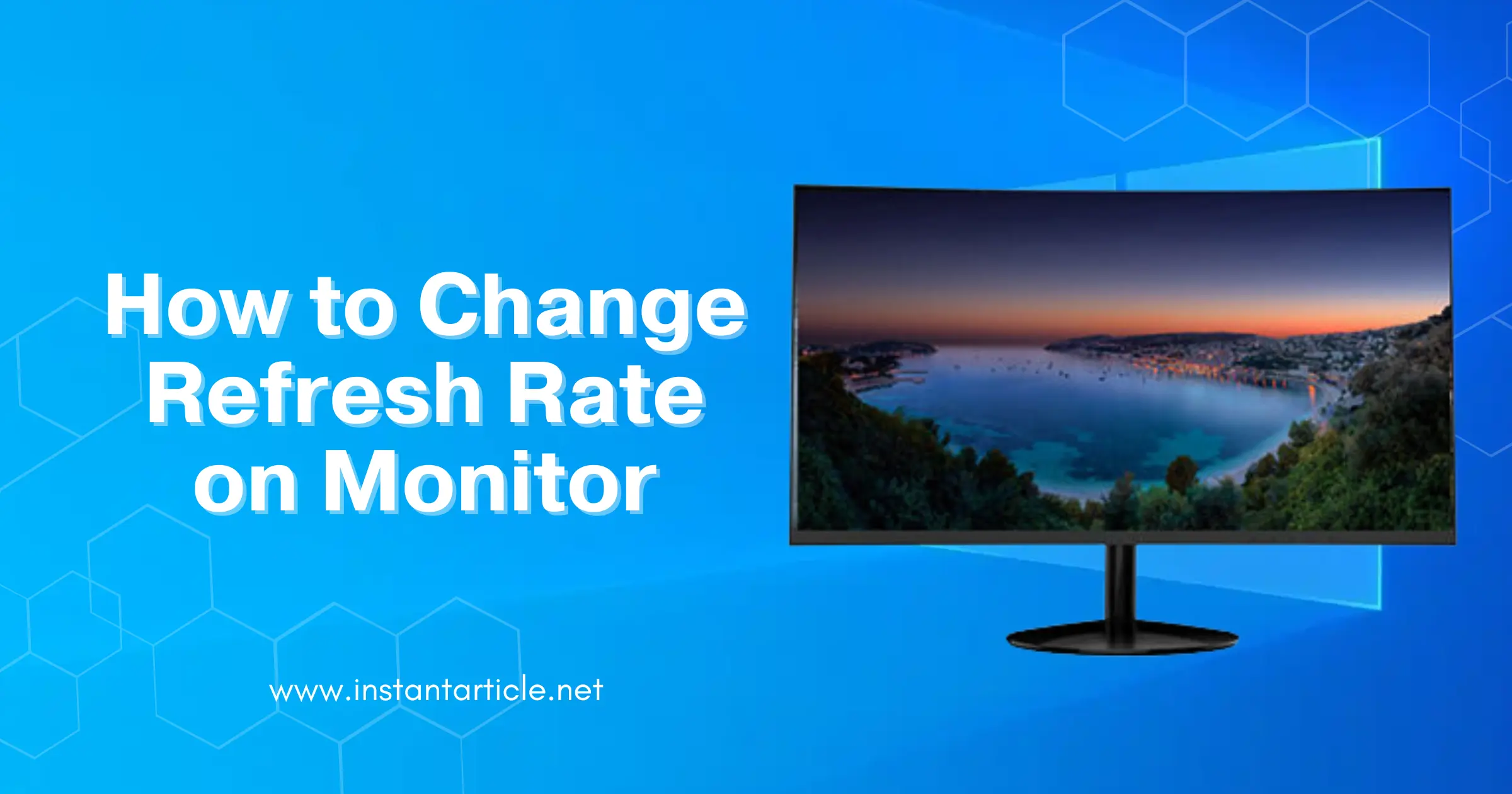If you’ve ever wondered why your video games look choppy or your eyes feel tired after staring at your screen for too long, it might be time to adjust your monitor’s refresh rate. I recently discovered this myself while trying to improve my gaming setup. Understanding how to change the refresh rate can make a big difference in your viewing experience, whether you’re gaming, watching movies, or just working on your computer.
What Is Refresh Rate?
The refresh rate is the number of times your monitor updates with new information per second. It is measured in Hertz (Hz). For instance, a 60 Hz refresh rate means the screen refreshes 60 times per second. When I upgraded my monitor from 60 Hz to 144 Hz, the difference was night and day. Movements became smoother, and I noticed less flicker, which helped reduce my eye strain during long gaming sessions.
Why Change the Refresh Rate?
Changing the refresh rate can have several benefits:
- Smoother Gameplay: A higher refresh rate makes fast-paced games look smoother and more responsive. I remember playing a racing game at 144 Hz for the first time; the increased fluidity made the experience more immersive and enjoyable.
- Reduce Screen Flicker: Increasing the refresh rate can help reduce flicker, which can cause eye strain and headaches. I’ve found that a higher refresh rate helps reduce the fatigue I feel after a long day of work.
- Better Video Quality: Higher refresh rates can improve the quality of videos, especially during fast-moving scenes. Watching action movies at a higher refresh rate makes everything look crisp and clear.
How to Change Refresh Rate on Different Operating Systems
Windows 10 and Windows 11
Changing the refresh rate on Windows is straightforward. Here’s how you can do it:
- Open Settings: Click on the Start menu and select Settings (the gear icon).
- Go to Display Settings: Click on System and then Display.
- Advanced Display Settings: Scroll down and click on Advanced display settings.
- Choose Monitor: If you have multiple monitors, select the one you want to change.
- Change Refresh Rate: Under Refresh rate, choose a new rate from the dropdown menu. Select a higher refresh rate if your monitor supports it.
- Apply Changes: Click Apply to confirm your changes.
A little tip from my experience: If you don’t see a higher refresh rate option, check your graphics driver. Updating it can sometimes unlock additional settings. If you need more help optimizing your display, check out our guide on How to Calibrate Your Monitor in Windows 10.
macOS
Here’s how to change the refresh rate on a Mac:
- Open System Preferences: Click the Apple logo in the top left corner and select System Preferences.
- Displays: Click on Displays.
- Display Tab: Go to the Display tab.
- Refresh Rate: If your monitor supports multiple refresh rates, you’ll see a dropdown menu for Refresh Rate. Choose your desired refresh rate.
- Confirm: Close the window to save your changes.
When I switched to a higher refresh rate on my MacBook Pro, the change was especially noticeable during video editing. The smoother transitions made my editing workflow much more efficient. For further display optimization, refer to How to Calibrate Your Monitor on a Mac.
Linux (Ubuntu)
For Ubuntu and other Linux distributions, the steps may vary slightly depending on the desktop environment, but here’s a general guide:
- Open Settings: Click on the Settings icon.
- Displays: Navigate to Displays.
- Select Monitor: Choose the monitor you wish to configure.
- Refresh Rate: Look for the Refresh Rate option and select the desired rate from the dropdown.
- Apply: Save your changes by clicking Apply.
Linux can sometimes be a bit tricky. I had to tinker with additional settings when setting up my dual monitors. Sometimes, using the command line can help apply changes when the graphical interface doesn’t show all the options.
Things to Consider When Changing Refresh Rate
- Monitor Capabilities: Make sure your monitor supports the refresh rate you want to set. Setting a refresh rate higher than your monitor can handle can cause display issues.
- Graphics Card Limitations: Your graphics card must also support the desired refresh rate.
- Cable Requirements: Ensure that your cables (HDMI, DisplayPort) can support the refresh rate you want to use.
In my case, I had to upgrade my HDMI cable to a version that supports higher refresh rates. If you’re experiencing issues, double-check that your cables are up to the task.
Frequently Asked Questions (FAQs)
If you set a refresh rate higher than your monitor can handle, it might result in a blank or black screen. To fix this, you’ll need to revert to the previous settings through safe mode or use another monitor to adjust the settings.
Yes, a higher refresh rate can reduce screen flicker, which often contributes to eye strain. If you spend a lot of time in front of your screen, a higher refresh rate might make a noticeable difference in comfort.
Not necessarily. While a higher refresh rate is great for gaming and fast-moving content, you might not notice much difference in tasks like browsing or working with text documents.
On Windows, you can check the current refresh rate in the Display settings under Advanced display settings. On macOS, it’s under the Display tab in System Preferences. Linux users can usually find it in the Display settings.
A higher refresh rate can improve visual smoothness but doesn’t affect the performance of your computer’s hardware. Ensure your graphics card and monitor support the desired refresh rate for the best experience.
Conclusion
Changing the refresh rate on your monitor can significantly enhance your viewing experience by making visuals smoother and reducing strain on your eyes. Whether you’re using Windows, macOS, or Linux, following the steps outlined above will help you adjust the refresh rate quickly and easily. Remember to check your monitor and cable capabilities to ensure they support the desired refresh rate.
By following this guide, you can enjoy a more comfortable and visually appealing computer experience. If you have any questions or tips from your own experiences, feel free to share them in the comments!

